Coronavirus Australia live updates: PM tells JobKeeper workers to dob in dodgy employers
Scott Morrison has told those accessing the JobKeeper subsidy to report bosses to police if they are not paid the full $1500 payment.
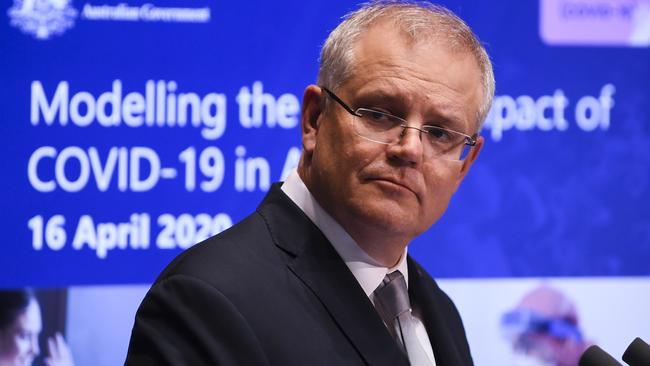
- Restrictions to stay as testing, tracing widened: PM
- Unemployment rate inches higher
- NZ ‘considering trans-Tasman bubble’
- Leaders plan ‘gentle steps’ out of lockdown
- Global cases double to two million
Welcome to live coverage of the continuing coronavirus crisis. The PM has told workers accessing the JobKeeper subsidy to report their bosses to police if they are not paid the full $1500 a fortnight payment. Widened testing and tracing are among three key things that need to happen before lockdowns are lifted, national cabinet says. Peter Dutton says backlash against WHO and calls for reforms should extend to other UN organisations. Australia’s unemployment rate has inched higher, but the worst is yet to come. Meanwhile, the number of cases worldwide doubles within just 14 days to top two million.
Imogen Reid 9.30pm: Staffroom, not classroom, risk for teachers: PM
Prime Minister Scott Morrison has addressed the issue of whether schools should remain open and the risks it poses to students and teachers on the ABC’s 7.30 program.
Asked by host Leigh Sales whether schools should reopen, the PM said he wants students to return to school as soon as teachers can assess appropriate protective measures.
“There are some teachers who shouldn’t be at school - particularly those in older age groups or those who have other health conditions,” he said.
“Teachers are more at risk in the staffroom than they are in the classroom.
“The other place they’re at risk is during school drop-off and pick-up, where there might be groupings of parents. That needs to be better arranged.”

Ms Sales pressed Mr Morrison on whether he was concerned for the large cohort of Australian’s struggling financially under the government’s heavy COVID-19 restrictions. Mr Morrison said the strict measures could be eased in a month’s time if the health protections the government announced today - testing, contact tracing and local response capabilities - controls the outbreak.
“I can assure you no one wants these restrictions in any longer than they have to be in,” he said.
“It’s one of the reasons we don’t go for that complete eradication strategy. A, it’s very elusive. A, the cost to those livelihoods are very significant, with no real clear additional benefit, at least from the evidence we’re getting at the moment.
“What we’re looking at doing is get the pace, get the churn, activity and economy moving back up, because when that happens, people’s jobs come back into play. Their incomes back more strongly, and their reliance on welfare and the JobKeeper program.
“The way out of this is to get on top of the virus, and get people back into work. If we do that, we’re winning.”
Mr Morrison added: “You can win the health war and lose the economic war, but you’ve got to deal with both of them at the same time.”
“Look at New York, London, Spain, all of those places - that could be Australia. We should not kid ourselves - the success we’ve had at the moment protects up from ending up where they are right now. If you don’t keep it under control, it will get away from you quickly and then you’ll have to lock down even harder and the economic cost will be even worse,” he said.
READ MORE: ‘Only one person to listen to on schools’
Richard Ferguson 8.25pm: PM urges super funds to back Virgin
Scott Morrison has urged industry super funds to help Virgin Australia and other transport companies under stress during the coronavirus pandemic.
The Prime Minister has continued to push back on the idea of a Virgin bailout or partial nationalisation, as the airliner faces collapse because of tightened border controls and a global aviation slump.
Mr Morrison called on the Transport Workers Union to use its super fund to invest in companies in which its own members are employed, as part of a way to find a commercial solution to the aviation industry’s woes.
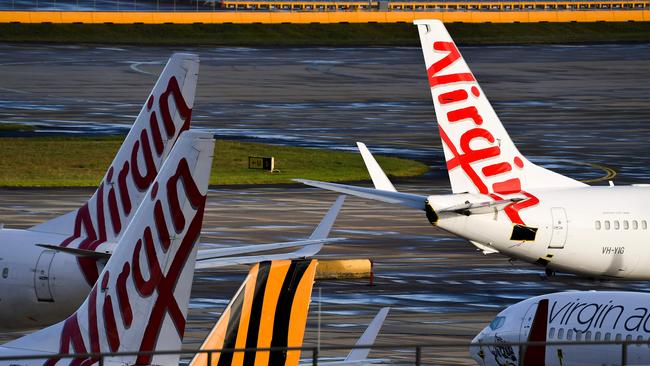
“We have a company that needs capital … there are funds out there that could be investing in a number of companies,” he told ABC News.
“I appreciate that comes at a different risk premium, but this is their own contributors that are involved here.
“And I’d like to see the industry and superannuation fund playing a more active role in dealing with the economic issues that we’re dealing with at the moment.”
READ MORE: Dogfight over Virgin continues as US bails out airlines
Imogen Reid 7.40pm: American Ruby Princess passenger dies
A Californian man in his 70s has died from coronavirus becoming Ruby Princess’s first international fatality, the ABC reports
Steven Lazarus, 76, developed symptoms after returning to the United States and had been on a ventilator for two weeks before he died on April 9.

More than 1000 crew remain on board the cruise ship berthed at Port Kembla, south of Sydney, where nine more crew members have tested positive for coronavirus. A further person has been removed from the ship to be treated for the disease in a NSW health facility.
In a statement, NSW Health said 149 crew onboard have now tested positive for the virus while 13 have been removed for treatment onshore.
READ MORE: Timeline to tragedy
Richard Ferguson 6.46pm: Advice to schools: small classes, keep vulnerable home
Australia’s chief medical officers are advising schools to have smaller classrooms and keep vulnerable staff members at home to fight coronavirus and get the education system back to normal.
The Australian Health Protection Principals Committee expanded its advice on Tuesday on how schools should be run, after the national cabinet agreed to a seven-principles plan for schools.
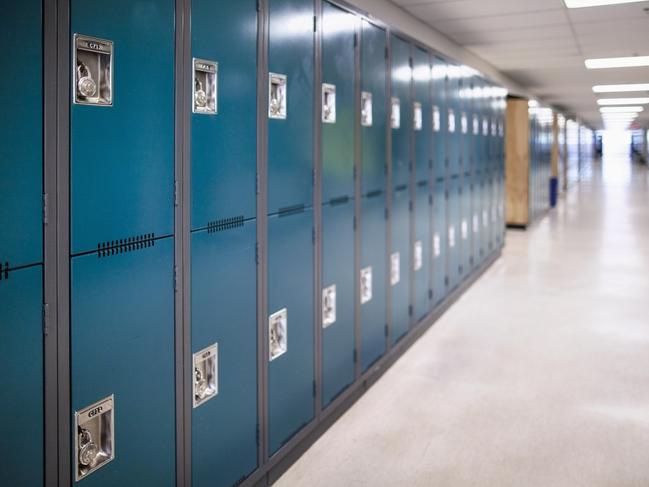
Swimming pools are to stay closed, teachers are to either take classes outside or avoid rooms without ventilation, and students from different classes and years are to mix far less.
“Where possible, adding flexibility to the work day by staggering start and finish times, recesses, lunch breaks and other key transition times, when mixing may occur between classes and year-levels,” the advice reads.
“Where possible, avoiding close-proximity queuing and encouraging increased space between students, for example, by placing markings on the floor.”
It is the first time the AHPPC has update its advice on schools in a month.
READ MORE: What we all think of toilet paper hoarders
Paige Taylor 4.25pm: Slow infection rates continue in Western Australia
Western Australia has recorded fewer than 10 new coronavirus cases each day for the past week, a marked slowdown in infections that occurred as the state’s testing regime expanded.
Two West Australians — one from the cruise ship Costa Victoria — were found to have coronavirus on Thursday.
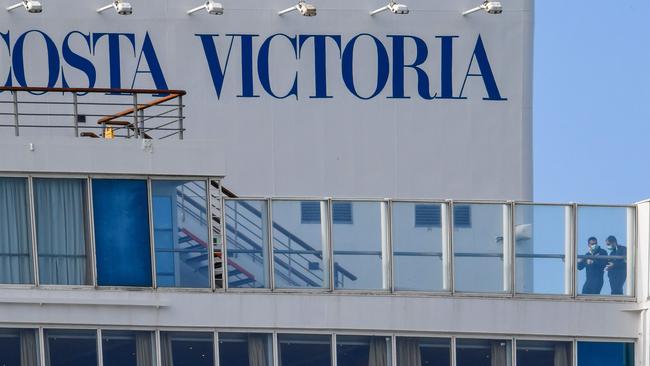
A third person — a foreign national from the cruise ship Artania — was also diagnosed, bringing the total number of people diagnosed with COVID-19 in WA to 535. Of those, 214 - or 40 per cent - were from cruise ships. A total of 340 people — or 64 per cent — have recovered.
West Australian health minister Roger Cook announced the latest figures as the McGowan government prepares to announce whether it will reopen schools on April 28 when the state’s school term begins.
READ MORE: Jobless figures fail to show carnage
Elias Visontay 4.20pm: Schools are safe, but listen to states: PM
Scott Morrison has told parents across Australia to take school safety advice from their local premier or chief minister as the government seeks to clarify rules for the return of term two.
“Parents should follow the instructions that are being provided by state premiers and state education ministers,” the Prime Minister said.
He said he wanted to make it clear that the Commonwealth does not run state schools.
“If you are going to school in Victoria there is only one person you need to listen to and that is the Premier of Victoria, likewise in New South Wales you should listen to the Premier of New South Wales ... but in the Northern Territory it is what the Chief Minister has said and they have different arrangements again.”
“I think it is very clear that the medical expert advice is. Children are safe to go to school, but there are issues within each state about the delivery of education, which they are going to take into account, which means that they will be operating on slightly different bases.”
Mr Morrison said despite these differences, states will have advice consistent with seven principles for schools set out by National Cabinet on Thursday.
Meanwhile Anthony Albanese has said the government is still putting out a “confused message” on schools after Scott Morrison released a list of seven principles for the return of term two.
The Opposition Leader was responding to the PM's press conference.
“It remains a somewhat confused message. The Prime Minister seems keen to say everyone should go to school, whereas the message from some of the state and territory governments is different,” Mr Albanese told ABC TV.
“I want to see people listen to the health professionals and to take their advice, rather than (from politicians) - and I’m sure that that’s what Daniel Andrews and others are doing - and I think that is the right thing to do.”
Mr Albanese welcomed announcement about ramping up containment measures, including increasing Australia’s testing regime.
He also said the government’s “narrative” will have to change ahead of the next election as a result of its COVID-19 response policies.
“The fact is the government has already destroyed its own narrative. They spent years denigrating the response to the Global Financial Crisis. And as soon as there was a crisis it had to deal with, guess what? It called for greater government intervention because that was what’s required.
“It was required during the Global Financial Crisis, it was required during this crisis. The difference is that they had an opposition that was constructive during this crisis, unlike the behaviour of the Coalition during the global financial crisis.”
READ MORE: ‘Only one person to listen to on schools'
Richard Ferguson 4.18pm: Sorry NZ, we’re not relaxing borders: PM
Scott Morrison has pushed back on New Zealand’s attempts to set up a “trans-Tasman bubble”, saying he is not considering any loosening of Australia’s borders.
New Zealand foreign minister Winston Peters told NZTV this morning that he was in discussions about opening up borders between his country and Australia, but not other nations.
The Prime Minister in Canberra said he was aware of Mr Peters’ desire to relax borders, but ruled it out in the short term.
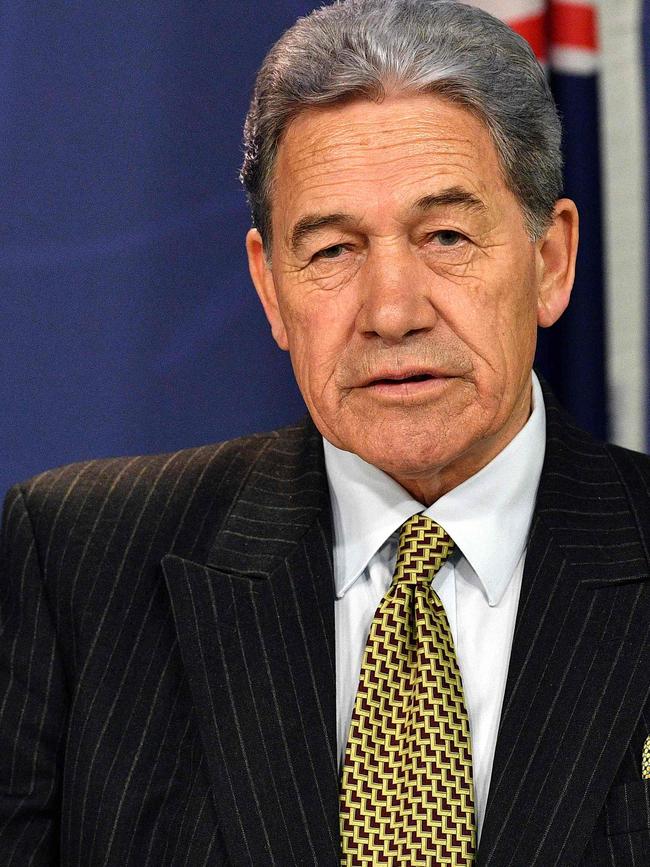
“We are aware of that but we are not at present contemplating any border changes at the moment, we will work closely with New Zealand, we have all along,” he said.
Mr Morrison also said Australia’s performance on flattening the COVID-19 curve looked comparatively good compared to New Zealand, which has put in place much stricter restrictions.
“And our measures have largely mirrored each other, New Zealand decided to go a lot further but I note the outcomes we are getting are actually on a per capita basis better than what is happening in New Zealand,” he said.
“That is not a criticism, that is just to say we managed to get as good if not a better outcome.”
READ MORE: NZ claiming victory in virus fight
Elias Visontay 4.15pm: Dob in non-paying bosses to cops: PM
Scott Morrison has told Australian workers accessing the JobKeeper wage subsidy to report their bosses to police if they are not paid the full $1500 a fortnight payment.
The Prime Minister also said employers found to be illegally withholding wage subsidies from their employees will be issued with a fine.
“That sort of behaviour where it occurs by employers is disgraceful and it’s illegal, and they should be reported to the police and the ATO, to make sure that can be followed up,” Mr Morrison said.
“It’s not on, it is appalling behaviour. We will move quickly on that.”
READ MORE: Scott Morrison urges workers to dob in dodgy employers to police, ATO
Rachel Baxendale 3.50pm: Victorian cases slow under tough restrictions
Victoria has recorded just two new confirmed cases of coronavirus in the past 24 hours — the state’s lowest daily increase since March 10.
Thursday’s two cases follow eight on Wednesday, 10 on Tuesday, 13 on Monday, and three on Sunday, showing the infection curve is well and truly flattening.
The state has now had 1301 COVID-19 cases, of whom 1137 have recovered — leaving 164 Victorians still battling the virus.
There have been 132 cases with no known link to overseas travel or contact with other infected people, indicating community transmission.
The state’s death toll remains 14, with no deaths since last weekend.
There are 39 people in hospital, including 18 in intensive care.
More than 73,000 coronavirus tests have been conducted in Victoria.
Health Minister Jenny Mikakos said she knew social distancing restrictions had been “tough”.
“But they have saved lives,” she said.
There are 1,301 cases of #COVID19 in Victoria & sadly 14 deaths. 132 cases may indicate community transmission. 39 people are in hospital, inc 18 in ICU. 1,137 people have recovered & > 73,000 Victorians have been tested. Our message is clear: Stay. At. Home. #springst
— Jenny Mikakos MP #StayHomeSaveLives (@JennyMikakos) April 16, 2020
“And while we haven’t been able to save everyone, they’re starting to show promising results.
“New cases are slowing down because most Victorians are doing the right thing, for which I am so very proud & so very grateful.
“Lifting them too soon, as overseas examples show, will undo all of this. It’s an incredibly fragile situation involving a highly contagious virus. So let’s all keep doing what’s going to keep us all safe.”
READ MORE: COVID-19: Nation’s great exodus revealed
Elias Visontay 3.35pm: We can’t afford to relax restrictions: Murphy
Chief Medical Officer Brendan Murphy says Australia “cannot afford to do relaxation” of social restrictions until the public health system is bolstered, as new modelling of Australia’s COVID-19 containment is released.
Professor Murphy said forecasting will now be referred to as “nowcasting” projecting only the next fortnight, and said new data of Australia’s flattening curve was “a very gratifying outcome”.

He said there were 6457 confirmed COVID-19 cases, with 63 deaths, and 42 hospital patients on ventilators.
Professor Murphy explained the effective reproduction rate of the virus — the number of people each case infects after authorities have medicated and controlled it — needs to lower to satisfy the Australian Health Protection Principal Committee that restrictions can be eased.
He said Australia’s effective reproduction rate at the moment is about two and half, and that it needs to drop below one.
“Obviously when we get that below one we can control and reduce the outbreak.”
Professor Murphy also said modelling showed Australia is detecting about 92 per cent of symptomatic cases, but that it needed to reach 100 per cent to ease restrictions.
The updated modelling will be released on Thursday.
READ MORE: Virus tracing app to help set us free
Elias Visontay 3.20pm: Elective surgery next on National Cabinet’s list
PM Scott Morrison has announced several other developments from Thursday National Cabinet meeting, which include:
— the National Cabinet will meet next Tuesday to discuss the current pause in elective surgery
— he clarified that restrictions and wage subsidy and unemployment payments will last through the September quarter
— school closures are a state government issue, and each state might have different rules
— the National Cabinet has identified seven guidelines and arrangements to help keep teachers and school staff safer, and it will release this advice after Thursday’s press conference
— the Government is providing an additional $1 billion financial assistance for NDIS providers to support increased costs during the COVID-19 period.
— Parliament will possibly sit for a “trial week” in May.
READ MORE: Health insurance faces radical surgery
Elias Visontay 3.10pm: Restrictions stay as testing, tracing widened: PM
Prime Minister Scott Morrison has revealed social isolation restrictions may be lifted in as soon as four weeks, outlining key public health goals that need to be met before measures are eased.
The PM emerged from a National Cabinet meeting on Wednesday to announce the direction, revealing the cabinet received briefings from Reserve Bank of Australia Governor Philip Lowe and Treasury Secretary Steven Kennedy, who emphasised “the need to synchronise our health and economic responses to the virus”.

“Our attention has now been turning to the road out, having worked through the road in.”
Mr Morrison said Australia remains in a state of “suppression”, and is not at the same stage of containment as New Zealand.
He said the most important metric going forward would be the effective reproduction rate of the virus and a “more extensive surveillance or sentinel as it is called testing regime”, beyond those who are symptomatic
Mr Morrison said the three goals that need to be met to relax restrictions are:
— a surveillance, or sentinel, testing regime, beyond symptomatic cases
— an increase to an “industrial capability” of contact tracing using technology
— a local response capability, similar to what has occurred in Northwestern Tasmania with the defence force this week.
“National cabinet agreed today that we will use the next four weeks to ensure that we can get these in place, and the baseline restrictions that have been set some weeks ago, will remain in place until we’re able to achieve those three goals, and we will be reviewing that in the next four weeks. There are no plans to change those for the next four weeks.”
READ MORE: Rapid tests for remote communities
Angelica Snowden 3.10pm: Villawood protest over peacefully after several hours
The protest at the Villawood Detention Centre has ended peacefully, Australian Border Force says.
A spokesperson from the government agency said it was resolved with the help of NSW Police.
“The three detainees involved in the protest have been transferred toAustralian Federal Police custody,” a spokesperson said in a statement.
”There were no injuries to detainees or staff.”
Earlier today riot police entered the detention centre in western Sydney after detainees became concerned about a COVID-19 outbreak in the facility.
READ MORE: What we all think of toilet paper hoarders
Rachel Baxendale 2.50pm: ‘No question’ restrictions lifted by end of year” Sutton
Victoria’s Chief Health Officer says he is hopeful there will be no need to increase social distancing restrictions and there is “no question” current measures will be lifted before the end of the year.
Brett Sutton, who has championed a “go harder, go faster” approach to reducing the numbers of coronavirus cases, said he was feeling confident the case curve had flattened, but warned caution was still necessary.

“The numbers have obviously been down for some days now, but this entire pandemic of two million cases plus, started with one case, and so we need to be absolutely assured that not only are numbers being driven down, but that they stay down,” Professor Sutton told 3AW.
Asked whether businesses would be reopening before the end of the year, Professor Sutton said: “Oh yeah, definitely.”
“There’s no question there’ll be a lifting this year of various current restrictions, I think, if we continue on this track of low case numbers, and especially if we continue to drive the numbers down,” he said.
“We’ve got a state of emergency in place now until the 11th of May.
“That’s a natural point to have a pretty robust review, but who knows what the next couple of weeks will bring?
“If we’ve driven numbers down to zero, that’s got to be on the cards, but it does involve everyone doing the right thing from here on in.”
Asked whether it was too early to say Stage Four social distancing restrictions were unlikely, Professor Sutton said: “I remain optimistic that we don’t have to go there.”
READ MORE: McLachlan ‘optimistic’ of AFL restart
Angelica Snowden 2.25pm: ‘Message clear’ on schools return: Piccoli
Former NSW Minister for Education and current Director of the Gonski Institute Adrian Piccoli says he believes “the message is clear” about students returning to school in term two.
Despite Scott Morrison calling for face-to-face learning to resume and some states insisting students continue to learn remotely, he said as a parent the advice was clear.
“To me the message is clear, if I can keep my kids at home then I should keep them at home,” he said on 2GB.
“When they get the go ahead that schools are open, then I will be sending my kids back to school.
The Gonski Institute conducted research into the effect of digital technology on learning at the end of last year, well before the COVID-19 pandemic hit the education system.
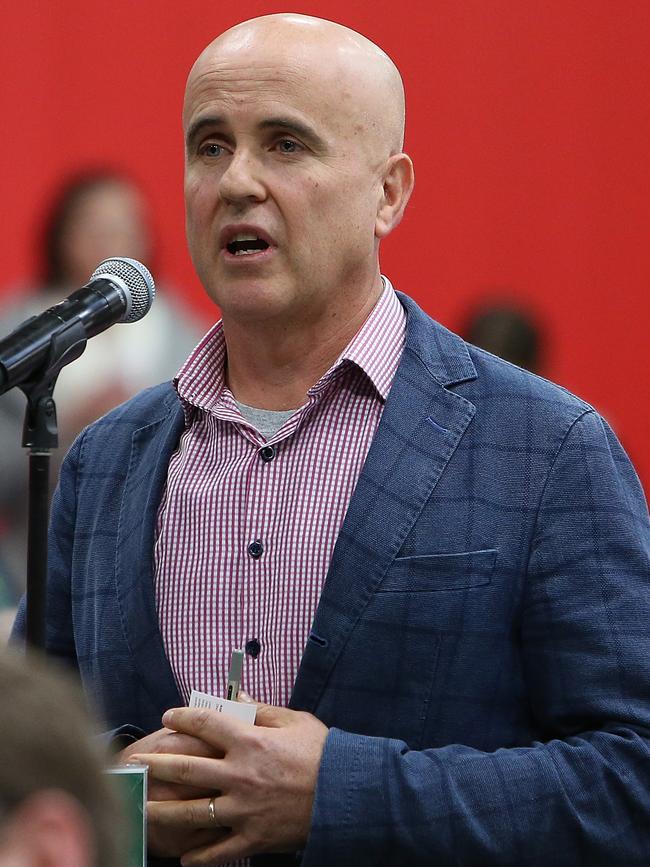
Mr Piccoli said a report released yesterday, ‘Growing Up Digital in Australia’, is timely since about 85 per cent of students have moved to remote learning amid the coronavirus pandemic.
“From a few weeks ago basically all education has been delivered remotely by the use of technology,” he said.
“Both students and teachers have been forced to develop new skills.”
He said the push to teach and learn remotely has been valuable in some respects now that students, teachers and parents alike have been forced to learn how to use new technology.
“[Platforms and technologies] are really valuable and I think when things go back to normal, [teachers] will say ‘let’s keep it’.”
“Technology on its own is not evil, it’s not the devil."https://t.co/LhwWSlUA7g
— 2GB 873 (@2GB873) April 16, 2020
Despite the positives, Mr Piccoli said children spending too much time outside of school on a device has become worse over five years and teachers face children who are “disengaged”, “tired” and more “easily distracted”.
“We do think there is a very strong correlation between increased screen time and some of these things that they are observing,” he said.
“Technology is not evil — it’s not the devil — but there is high value and low value technology use.”
Research released by the Gonski Institute yesterday found that 84 per cent of teachers believe digital technologies were a “distraction in the learning environment”.
Almost all of the teachers surveyed said there was an increase in the amount of online harassment and bullying incidents they had to manage.
READ MORE: Snap back recovery faces reality check
Richard Ferguson 1.52pm: WATCH: PM to address media at 2.15pm
Scott Morrison will soon provide more details on his plan for schools to return to normal, following a meeting of the national cabinet.
The Australian revealed that schools could reopen within four to six weeks to start unlocking the economy and getting people back to work, with states and territories preparing to resume classes by the middle of term two as the spread of COVID-19 is contained.
The Prime Minister will address the media at 2.15pm and is expected to talk more about his wish for schools across the country to open soon. You can watch live it at the top of this article.
READ MORE: We can’t stand for house not sitting
Lachlan Moffet Gray 1.52pm: Ardern eyes end of New Zealand lockdown
New Zealand Prime Minister Jacinda Ardern has announced the partial reopening of schools and businesses if the country moves down from level four restrictions to level three, a decision that is expected to be made by Monday.
On March 25 the country was placed under strict level four restrictions, necessitating the closure of schools and almost all businesses, in an effort to flatten the growth of coronavirus in the country of 4.8 million.
The restrictions were intended to be in place until April 22, but with the country recording just 15 new cases in the last 24 hours, bringing the total to 1401, the government is mulling a relaxation of the draconian rules.
“Level 3 is a progression, not a rush to normality,” Ms Ardern told reporters on Thursday.
“It carries forward many of the restrictions in place at level 4, including the requirement to mainly be at home in your bubble and to limit contact with others.”
Restrictions that will be lifted include bans on the operation of online businesses and drive-throughs, as well as the operation of childcare centres and schools up to year 10, although attendance will be voluntary.
Businesses that are not customer-facing, such as construction, can also reopen if strict social distancing rules are followed.
Bans on wedding and funeral gatherings will also be lifted, although no more than ten people will be permitted to attend.
New Zealanders will also be permitted to return to the great outdoors for exercise, with bans on swimming, surfing and fishing lifted.
Ms Ardern warned the country not to expect a rapid return to normality, saying that if the country moves to level three restrictions, it is likely to remain there for some time.
“Treasury modelling tells us that we are better off in the longer term to stay in levels 3 and 4 a bit longer now rather than to have to switch back later,” she said.
READ MORE: Nation’s great exodus revealed
Sarah Elks 1.49pm: Trad unveils first plank of $500m package
Recruiters will be paid $350 by the Palaszczuk government for each Queenslander they find at least a week’s work, under the first plank of Treasurer Jackie Trad’s $500m coronavirus workers’ assistance package.
The Deputy Premier announced a new online portal that would match people who had lost their jobs due to COVID-19 shutdowns to sectors that are crying out for more workers, such as supermarkets, hospitals, and aged care.

Ms Trad said today’s labour force figures for the first fortnight in March showed Queensland had added jobs in that two week period, but the true impact of the coronavirus crisis had not been felt.
She said Queensland was likely to experience double-digit unemployment, along with the rest of the nation.
Ms Trad also confirmed that she would deliver some form of economic update, and release the state’s financials, before the October 31 state election.
The scheduled April 28 budget has been cancelled and a new date has not yet been set.
A decision has not yet been made about whether there would be a full budget, an economic update, or a mini-budget, before the election.
READ MORE: Washington could win hearts and minds in Iran
Victoria Laurie 1.45pm: Stranded WA passengers ‘waited a week for flights’
Around 600 interstate passengers who disembarked in Perth from the cruise ship Vasco da Gama on March 27 into two weeks’ isolation say they have waited nearly a week before special flights have emerged to get them home.
The Australian understands several hundred will be flown to Melbourne and Adelaide today. They were let out of enforced 14-day hotel isolation last Friday but have been stranded by cancelled Qantas and Virgin flights out of Perth.
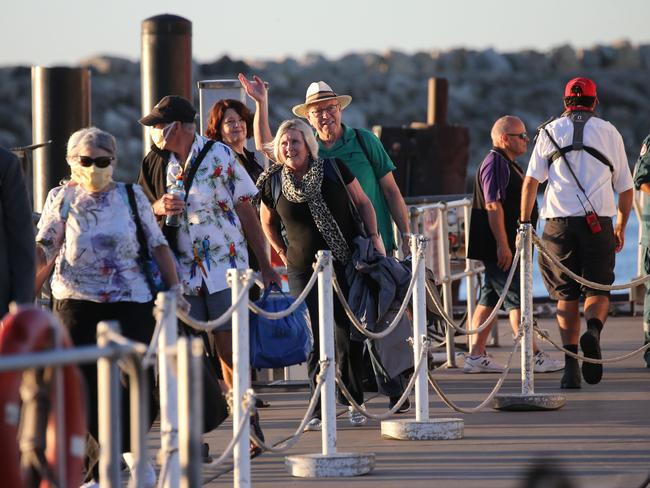
Their tour operator Imagine Cruising has organised an aircraft to take passengers back to Melbourne, returning to Perth via Adelaide to drop off other passengers. The passengers had paid for return air tickets from London to Australia, after the cruise was scheduled to end in the UK.
Another group who booked with different travel agents say they have been told today by the WA government that within 48 hours they will get confirmation of flights leaving on Sunday.
The Vasco da Gama arrived in Fremantle on March 27 after the ship was refused entry to multiple ports. It has not resulted in any positive cases of COVID-19.
READ MORE: Elective surgeries set to restart
Lachlan Moffet Gray 1.38pm: Fourth day of no new cases in ACT
The ACT has recorded its fourth consecutive day without a new coronavirus case, with the total number of cases holding steady at 103.
ACT Health said in a release that 79 cases have recovered, more than three quarters of the case total, and have been released from self-isolation.
ACT #COVID19 update (16 April 2020) There have been no new cases recorded in the past 24 hrs. The total is still 103. A total of 79 cases have recovered and have been released from self-isolation. The number of negative tests in the ACT is now 6516 â„¹ï¸ https://t.co/YGW9pOHG3e pic.twitter.com/pCMcwkPyWJ
— ACT Health (@ACTHealth) April 16, 2020
Two patients remain in hospital treatment in Canberra, and the remaining 22 cases are recovering at home.
The death toll for the territory remains at three, following the death of a woman in her 60s, who was a passenger on the Ruby Princess, on Wednesday.
READ MORE: Schools may re-open ‘within four weeks’
1.32pm: Detention centre protest over virus fears
Riot police have entered western Sydney’s Villawood Immigration Detention Centre to stop a protest by detainees concerned about a COVID-19 outbreak in the facility.
Three detainees in the centre’s Blaxland compound have been holding a rooftop protest since Saturday while others remain on a hunger strike demanding COVID-19 virus testing and the release of detainees, according to the Refugee Action Coalition.

“Other detainees in Blaxland have been locked in their rooms,” the Refugee Action Coalition said in a statement on Thursday.
The riot squad are on the scene with police working with Australian Border Force to control the situation, a NSW Police said.
AAP
READ MORE: Canberra slammed over envoy
Lachlan Moffet Gray 1.27pm: Further nine Ruby Princess crew members test positive
A further nine crew members aboard the ill-fated Ruby Princess cruise ship have tested positive for coronavirus while a further one has been removed from the ship to be treated for the disease in a NSW health facility.
In a statement, NSW Health said 149 crew onboard have now tested positive for the virus while 13 have been removed for treatment onshore.
It means more than 10 per cent of the 1040 crew quarantined on board the vessel at Port Kembla have tested positive, although NSW Health has not provided details as to the exact number of crew who have been tested for COVID-19.

NSW Health also said that five more residents at the Anglicare Newmarch House aged care facility in the western Sydney suburb of Caddens have tested positive for coronavirus since yesterday, bringing the total number of cases at the facility to 15, six being staff and nine being residents.
The cluster outbreak at the home was caused by a health worker at the facility who only exhibited mild symptoms of the virus. NSW Health are investigating where the employee may have contracted the disease.
The worker also worked two shifts at the Greystanes Disability Services facility in the suburb of Jamisontown. Four residents and six staff are in isolation.
NSW Health recorded just 11 additional cases in the past 24 hours, bringing the total to 2897, a good result considering testing doubled in the past 24 hours to 3200.
207 cases are being treated by NSW Health, with 26 in ICU and 19 requiring ventilators.
26 people have died of coronavirus in NSW and 63 have died across Australia.
Elias Visontay 1.23pm: Jobs figures sign of labour market strength: Cash
Employment Minister Michaelia Cash says new unemployment figures are a sign of the strength of the Australian labour market leading into the coronavirus outbreak.
Senator Cash was responding to fresh data showing Australia’s unemployment rate inched higher to 5.2 per cent in the first half of March, as the ABS official household survey conducted over the first half of that month failed to capture the initial wave of job losses resulting from the COVID-19 health crisis and the associated measures to slow its spread.
The unemployment rate was 5.1 per cent in February, according to the seasonally adjusted figures from the Australian Bureau of Statistics.
“The government is the first to acknowledge that the period does not reflect the impact of COVID-19,” Senator Cash said.
“What it does show, though, is the strength of the labour market as we entered the COVID-19 period. Australians were still at that time ready and willing to work. We had the participation rate remain strong and steady at 66 per cent.”
Senator Cash said the fact that unemployment is predicted to rise to 10 per cent by the middle of the year meant the government’s JobKeeper wage subsidy would “ensure that as many Australians as possible are able to either be kept in employment or alternatively to have that connection to their employer”.
She said 850,000 businesses have registered for the JobKeeper scheme as of Thursday.
Senator Cash also urged any employees who do not receive the full $1500 a fortnight wage subsidy to complain to the tax office about their employer.
READ MORE: How China failed the world
Angelica Snowden 1.16pm: Global coronavirus cases surpass 2 million
The global number of coronavirus cases has surpassed 2 million, after the virus was first discovered in China in late December.
That’s 0.25 per cent of the global population infected in 107 days, or about three months.
The US has the highest number of cases in absolute terms after 636,350 people contracted the potentially deadly illness.
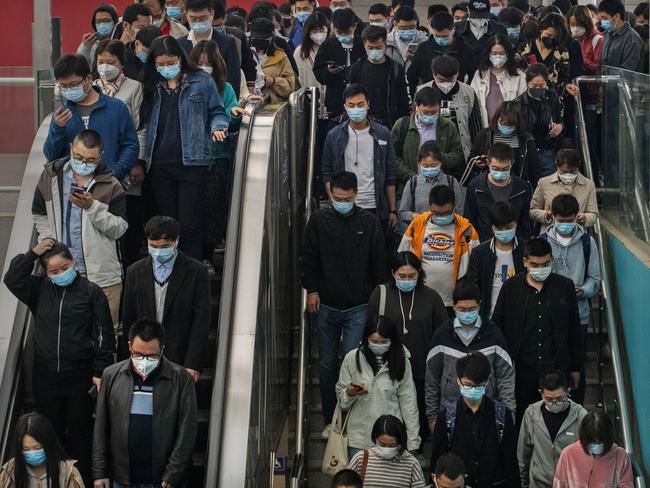
It also has recorded the highest number of deaths in comparison to any other country due to COVID-19, with 28,326 dead after contracting the virus.
The US has become the new epicentre of the pandemic, after Wuhan - ground zero - lifted restrictions in the city last Wednesday.
Wuhan is where most of China’s more than 82,000 virus cases and over 3300 deaths from COVID-19 were reported have been gradually eased as the number of new cases steadily declined.
The Chinese city was in lockdown for 76 days.
READ MORE: How companies are raising cash to pay their staff
Rachel Baxendale 12.51pm: ‘I hope we’ll never have to use 4000 ICU beds’
Victoria’s $1.9bn boost to its health system has already resulted in the opening of 230 extra hospital beds, with a total of 700 on the way in addition to the 4000 new intensive care beds the state government has promised.
Health Minister Jenny Mikakos said the 700 beds were intended to boost the system’s “surge capacity” and had come as a result of recommissioning old hospitals and bringing forward the opening of new ones.

The extra beds are located at sites including the former Peter MacCallum Cancer Institute, the former Geelong Private Hospital, Bendigo Hospital, Shepparton Hospital, the Alfred Hospital, Austin Hospital, Monash Medical Centre Clayton and Casey Hospital.
The first 300 of the extra 4000 ICU beds have begun to be commissioned at the Alfred Hospital, Austin Hospital and Monash Medical Centre, Clayton.
Asked whether Victoria needed 4000 extra intensive care beds, given the numbers of new COVID-19 cases are dramatically decreasing and the expense involved, Ms Mikakos said she would rather be over-prepared than under-prepared.
“There might come a time when we reflect back and say Victoria over-prepared,” Ms Mikakos said.
“I’ll be happy to cop that criticism that we over-prepared, rather than under-prepared.
“I certainly hope that we will never need to use 4000 ICU beds, but if we ever had a repeat of New York here, we would never have enough ICU beds.
“We would never have enough doctors or nurses to keep people alive. That’s been the experience in so many parts of the world. We never want to see that here.”
READ MORE: Desperate bid to bring Australians home
Elias Visontay 12.47pm: Labor renews calls to extend wage subsidy
Labor is using rising unemployment figures to renew calls for an expansion of the $130 billion wage subsidy to include casual workers who have not been with the same employer for more than 12 months.
Opposition employment spokesman Brendan O’Connor responded to new data showing Australia’s unemployment rate inched higher to 5.2 per cent in the first half of March, by pointing out the rise doesn’t reflect the initial wave of job losses resulting from the COVID-19 health crisis.
The unemployment rate was 5.1 per cent in February, according to the seasonally adjusted figures from the Australian Bureau of Statistics.
“These figures are a result of a survey that was conducted between March the first and March the 14th last month so this is before any lockdown. This is before the stand down of Qantas employees. This is before all of the restrictions that have led to the closures of businesses. This is before the long queues we saw at each Centrelink office that was occurring late March, so we have to be very mindful of that.
Mr O’Connor said more than one million casual workers will not be eligible for the $1500 a fortnight JobKeeper payment, and called on the government to expand the program.
“We would ask the government, indeed ask the Treasurer, to use his powers that have been provided to him by way of the Parliament to broaden the application to cover those workers, otherwise unemployment is going to go up and up and up.”
READ MORE: What will the world look like after COVID-19?
Rachel Baxendale 12.20pm: ‘Victoria operates its schools’: Minister
Victorian Education Minister James Merlino has emphasised that “Victoria operates its schools”, amid conflicting messages from the state’s Chief Health Officer and Canberra about whether children should be learning from home.
Chief Health Officer Brett Sutton on Wednesday issued a series of tweets, reiterating his advice that children should learn from home during Term Two, despite Prime Minister Scott Morrison stressing in a Facebook message on Wednesday morning that: “It’s so important that children are able to keep physically going to school”.
My advice to the Victorian Government was and continues to be that to slow the spread of coronavirus, schools should undertake remote learning for term two.
— Chief Health Officer, Victoria (@VictorianCHO) April 15, 2020
1/3
Professor Sutton’s tweets came after his federal counterpart, Chief Medical Officer Brendan Murphy, said on Tuesday that he was concerned state governments were closing schools “not from a health recommendation but almost because of parental fear”.
Asked whether the conflicting messages were creating unnecessary confusion for parents, Mr Merlino said he would not “speak for the Prime Minister” or “pre-empt discussions of National Cabinet”, which is due to meet on Thursday morning to review policy on how schools should operate during the COVID-19 pandemic.
“But Victoria operates its schools, Victoria is responsible for the school system,” Mr Merlino said.
“The Victorian advice, based on health experts, is that if you can learn from home, you must learn from home, and parents are heeding that message, and it is making a difference.
“Our message has been consistent right along, based on the expert health advice of Victoria’s Chief Health Officer.”
READ MORE: They sacked me for speaking out: doctor
Elias Visontay 11.48pm: Backlash should extend to other UN bodies: Dutton
Peter Dutton says backlash against the World Health Organisation and calls for Australia to demand reforms should extend to other UN organisations that “aren’t acting in the global interest”.
The Home Affairs Minister reaffirmed the government’s position that it will not follow US President Donald Trump’s lead and halt funding to the WHO over its handling of the COVID-19 outbreak from China, arguing the body plays an important role in healthcare in the Pacific region.
Mr Dutton labelled the WHO’s position on the safety of wet markets “incredulous”.
“It’s a huge mistake, and they need to reassess what their advice is because it’s clear now that there have been a number of instances, if you go back through SARS, etc, and this is a significant problem that the world’s awake to,” Mr Dutton told 2GB Radio.
“We’ve got to call any of these organisations out when we see it and there are other bodies within the UN that I would argue, aren’t acting in the global interest, aren’t acting certainly in the interest of countries like Australia.
“I think there’s been a big wake up call out of coronavirus. If there is some silver lining to a horrible situation it is that there’s going to be a reassessment of some of these actions and I think the public would demand nothing less than that.
“The government’s prepared to step up and I want to make sure that we call out bad behaviour and whether it’s the WHO or other organisations within the UN, etc, we shouldn’t be afraid to do that and I don’t think this government will be.”
Mr Dutton said he “can certainly understand” why Mr Trump halted funding to the WHO, but said “if we look at what’s happening though in Indonesia, or has potential to take place in somewhere like the Solomon Islands or PNG, we rely on organisations like the WHO to deliver medical services and support those on the ground”.
“There are going to be serious numbers of people who don’t survive within some of those countries. And we’ve done a lot to provide support. We’ll continue to do that because this is our part of the world, and it’s important for us not to let other countries use this as an opportunity to influence their leverage within some of these communities.”
READ MORE: Heat on Scott Morrison over WHO funding
Patrick Commins 11.37pm: Unemployment rate rises amid COVID-19 crisis
Australia’s unemployment rate inched higher to 5.2 per cent in March, as the ABS official household survey conducted over the first half of that month failed to capture the initial wave of job losses resulting from the COVID-19 health crisis and the associated measures to slow its spread.
The unemployment rate was 5.1 per cent in February, according to the seasonally adjusted figures from the Australian Bureau of Statistics.

There were 5900 jobs added during the month.
The participation rate was steady at 66 per cent. Underemployment - those who have jobs but would like to work more - moved from 8.7 per cent to 8.8 per cent.
The ABS’s labour survey was conducted in the first half of last month, before the more severe government restrictions were put in place, including the closure from March 22 of non-essential businesses such as casinos, pubs, and cinemas. Restaurants and cafes were forced to offer only takeaway food.
READ MORE: Nation’s great exodus revealed
Angelica Snowden 11am: Four new virus cases reported in Tasmania
Tasmanian Premier Peter Gutwein says four new cases of COVID-19 were reported in the state overnight, bringing the total to 169. They are linked with the outbreak in the north-west, which has forced the closure of two hospitals in Burnie and left more than 20 per cent of Tasmania’s health workforce and their families quarantined.

There were no more deaths in the state overnight, with the toll holding at six.
“I said yesterday for the keyboard warriors to back off, and I will say it again,” he said.
“These workers have supported our community and right now is not the time to be lining them up and taking pot shots at them.”
Mr Gutwein said education was on the agenda for the National Cabinet meeting today, and he confirmed that schools in Tasmania would reopen after the holiday break. He said National Cabinet would discuss safety for teachers as they return to classrooms.
READ MORE: Schools may reopen ‘within four to six weeks’
Sarah Elks 10.45am: Qld records just five new cases overnight
Queensland has recorded just five new positive coronavirus cases overnight, with Chief Health Officer Jeannette Young describing the relatively small increase as “excellent”.

But Dr Young said there was a slow increase of the number of cases that had been contracted interstate. Queensland’s total is now 1001. There were five new positive tests confirmed overnight, and three cases in yesterday’s data turned out to not be positives.
Health Minister Steven Miles said the state had tested 73,868 people.
Of the 1001, 21 are being treated in hospital and nine are ventilated. 39 cases have been confirmed as local transmission, and 18 from those who have travelled from interstate.
READ MORE: Young women most at risk
Angelica Snowden 10.25am: Winston Peters: Trans-Tasman bubble possible
New Zealand’s Deputy Prime Minister has claimed his government is in talks with Australia about opening the borders between the two countries to create a trans-Tasman bubble.
“If things keep on going that way, that is a serious possibility, yes we are exploring that as we speak,” Mr Peters told TVNZ.
Mr Peters also revealed the country’s hardline lockdown could lift as early as next week.
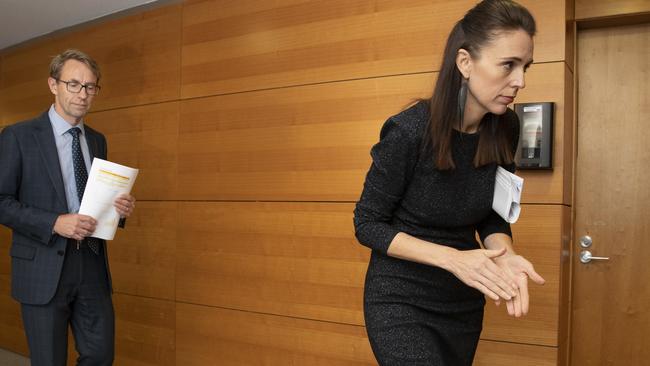
Mr Peters said Jacinda Ardern’s cabinet would meet on Monday to consider whether the lockdown had been effective enough to lift the most oppressive restrictions, either nationwide or in lesser affected regions.
A “whole lot more” business would open under lighter restrictions, he told NewstalkZB.
“Unless there is an adverse finding... the evidence looks compelling for that [lockdown lifting],” Mr Peters said.
Foreign Affairs Minister Winston Peters has hinted at a potential "trans-Tasman bubble" of relaxed border restrictions between New Zealand and Australia if both nations can progress in their response to the COVID-19 pandemic - more: https://t.co/eivXmm9dZu pic.twitter.com/liotc5Rx9h
— TVNZ Breakfast (@Breakfaston1) April 16, 2020
He said guidelines would be released on Thursday about how businesses would be allowed to operate under the different restrictions. He also said advice would be provided to specific sectors.
Jacinda Ardern on Wednesday declared trans-Tasman travel could be a long way off as the country’s coronavirus elimination strategy relied on tight border arrangements.
“We have created no end date for the border restrictions,” Ms Ardern said, adding that her goal was the resumption of “everyday life” in New Zealand.
“The fastest way we can do that is to maintain the border restrictions we have.”
A former chair of the Australia-New Zealand Leadership Forum, Adrian Littlewood, has suggested New Zealand and Australia begin planning to resume trans-Tasman travel, given both countries have had some early success in stamping out the virus.
Ms Ardern said that conversation with Australian counterpart Scott Morrison “will be a way off”.
“With a strategy like ours, we can have no tolerance for someone potentially coming in with COVID-19 and setting off a chain of events that could be devastating,” she said.
READ MORE: Desperate bid to bring Aussies home
Anne Barrowclough 10.20am: Trump: We’ll be the comeback kids
Donald Trump has claimed the US has passed its peak of coronavirus cases and some states will open soon.
At the daily White House briefing, Mr Trump said new reopening guidelines would be announced on Thursday after he speaks to governors.
“We’ll be the comeback kids, all of us,” he said. “We want to get our country back.
“The data suggests that nationwide, we have passed the peak of new cases,” Mr Trump told reporters.
“Hopefully that will continue, and we will continue to make great progress.”
The US death toll has reached 27,085 with 614,482 infections
But Mr Trump said 3.3m COVID-19 tests had been conducted and antibody tests would soon be available, which would “put us in a strong position to finalise guidelines for states reopening”.
The Trump administration had pencilled in 1 May as a possible date to reopen the nation, but the president said some states might be able to return to normal before that date.
“I think that will be a very exciting time, indeed,” he said.
READ MORE: Let’s cut the bull
Rachel Baxendale 10.05am: Vic unable to update new cases
Victoria’s Health Minister will be unable to provide updated information on the state’s coronavirus cases on Thursday morning, due to a “system upgrade” overnight.
A spokeswoman for Jenny Mikakos said the information would not be available until Thursday afternoon.
The delay follows technical issues with the Department of Health and Human Services website, which saw information unavailable for more than 48 hours late last month.
Ms Mikakos is due to address the media shortly, alongside deputy Chief Health Officer Annaliese van Diemen.
READ MORE: Clusters remain but curve flattening
Agencies 9.45am: Germany to partially reopen schools, shops
Germany has achieved a “fragile intermediate success” in its the fight against the coronavirus and will take small steps out of lockdown with the partial reopening of shops next week and schools from May 4, Chancellor Angela Merkel said on Wednesday.

Social distancing rules would remain in place until May 3 under the measures that Merkel and the governors of Germany’s 16 states agreed at Wednesday’s meeting. They plan to meet again on April 30 to review how to proceed after May 3.
Under Wednesday’s agreement, retailers whose shops are up to 800 square metres will be allowed to open next week, along with car and bicycle dealers, and bookstores, though they must practise strict social distancing and hygiene rules.
Schools would start opening from May 4, with priority given to final-year students. Hairdressers could also reopen then.
READ MORE: Daniel Finkelstein writes: What will the world look like after pandemic?
Elias Visontay 9.20am: Leaders to plan ‘gentle steps’ out of lockdown
Scott Morrison and state and territory leaders will discuss the “first major stage” of planning “gentle steps out” of social restrictions at a National Cabinet meeting on Thursday, according to Health Minister Greg Hunt.
Mr Hunt said Australia is pursuing a “continuous suppression of the virus”, which will include lowering infection numbers, expanding testing, analysing sewage for outbreaks, and responding efficiently to outbreaks with localised lockdowns similar to the response in north west Tasmania this week.
“It’s highly unlikely that you can completely eradicate the virus, that just wouldn’t be an honest statement in a country of 25 million. But we are down to just over 40 cases a day at the moment,” Mr Hunt told Sky News.
New data revealed shows one in 10 people are defying orders by grocery shopping every day and one in five Australians are buying more alcohol than usual during the coronavirus pandemic. https://t.co/GWsn9UMP49 #7NEWS pic.twitter.com/w95P8h04CB
— 7NEWS Sydney (@7NewsSydney) April 15, 2020
Mr Hunt said he “won’t make a false promise” that Australia is past the worst of COVID-19, “but we are in a position that I think overwhelmingly the rest of the world would want to be in”.
On restrictions, he said “we went in quickly, we will step out gradually”.
“We’re not there at the step out yet, but we’re planning that step out...In the National Cabinet, the premiers and the Prime Minister are doing that today (Thursday), in the first major stage of that planning.
“But we have to be careful, we don’t want a second wave, we’ve seen that in other successful countries. So the more we’re able to stabilise now, the greater freedoms we’ll have later on.”
READ MORE: Bans on low risk acts ‘excessive’
Elias Visontay 9.00am: National Cabinet to focus on teacher safety
Health Minister Greg Hunt says a National Cabinet meeting on Thursday to discuss measures for schools will focus on health measures for teachers, insisting: “The safety of our children is very well established”.
Mr Hunt also foreshadowed the possibility some states “may take different views” to updated guidelines that are released after the National Cabinet considers health advice.
The National Cabinet will consider ways to make schools safer for teachers as it meets this morning. A showdown between the states is expected over whether schools should remain open.https://t.co/vMyBesoaAL
— Sky News Australia (@SkyNewsAust) April 15, 2020
His comments come as the government maintains it is safe for schools to reopen for term two, despite comments from Victorian Chief Health Officer Brett Sutton who advised the Victorian Government “to slow the spread of coronavirus, schools should undertake remote learning for term two”.

Speaking to Sky News on Thursday morning, Mr Hunt said Dr Sutton had later clarified those comments, and that medical advice given to the National Cabinet “is based on evidence from around the world…that schools are safe for children.”
“There’s very very little evidence of transfer from student to student amongst school children, but equally, and this is what National Cabinet is considering to make sure there are the safeguards, and in particular the confidence for teachers and parents during drop off.
“The safety of children is very well established and that’s just absolutely paramount. But we also want to make sure that there are the safeguards and the confidence for the teachers, our amazing heroic teachers in just the same way that our nurses and our doctors are frontline, we want to make sure that they have the confidence that everything is being done.”
“So what’s occurring now is there’s a set of national guidelines about the safety for children. And then there’s an additional discussion today (Thursday), to make sure that there’s full safety for the teachers, for the adults. And we also respect the fact that against those national guidelines, different states may take different views but where we can have kids learning in the best possible environment, we all think that that’s exactly the most desirable outcome,” Mr Hunt said.
READ MORE: Private fees cut to help parents
Angelica Snowden 9.00am: States ‘looking to next stage’ of virus response
NSW Premier Gladys Berejiklian said she would not reveal the national cabinet’s “agenda” but said everyone involved was “looking to the next stage” of the coronavirus response.
“All of us, if and where appropriate, want to provide some sense of relief if we can,” she said.
“Early indications are that this is a distinct possibility.”
Although some measures could be relaxed, the premier said until a vaccine was developed, social distancing would remain in place.
“Until there is a cure or vaccine, we have to live with this virus,” she said.
“The national cabinet and the states will consider what it the best way we can live with this.”
She said NSW was “starting to get good data” about the impact restrictions are having.
The premier will update the community on any changes in COVID-19 restrictions on a monthly basis.
READ MORE: Health officer’s tweet highlights split with Canberra
Angelica Snowden 8.50am: Powerhouse, ANZ stadium projects ‘should go ahead’
Deputy Premier and Minister for Regional NSW John Barilaro said the Powerhouse Museum’s relocation project should go ahead because it would create more jobs in the state.
He said he also supported the redevelopment of the ANZ stadium because “it’s about job creation”.

The Deputy Premier’s comments come after NSW Treasurer Dominic Perrottet cast doubt over the viability of both projects because the NSW state budget suffered a $10 billion hit due to coronavirus.
At a joint party room meeting yesterday Mr Perrottet would not recommit to the Powerhouse move.
The ANZ stadium was not raised at the meeting, but the Daily Telegraph reported that other ministers have privately been arguing it should be scrapped.
READ MORE: They sacked me for speaking out: whistleblower
Angelica Snowden 8.30am: NSW records just 11 new cases
NSW Premier Gladys Berejiklian has said there were only 11 new cases of COVID-19 in the last 24 hours.
The Premier said more than 3,000 people were tested for COVID-19 after her government’s push to increase testing in hot spots and prevent community transmission.
She encouraged people who work with vulnerable people to also get tested, even if they don’t live in identified areas with high rates of coronavirus.
“You can be confident in the new systems in place, it can take just a few hours to get a result,” she said.
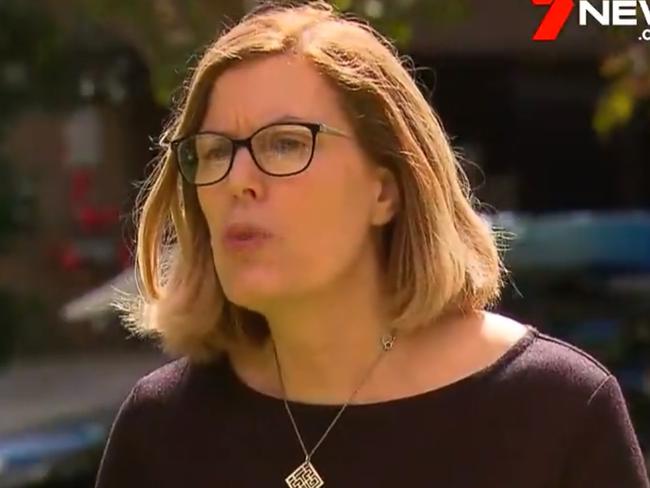
The Premier also said to workers employed by the NSW Government: “Your job is safe, you will keep working”.
She said NSW will keep working with the economy, saying 1000 extra people have been employed to work in Service NSW.
NSW Chief Health Officer Dr Kerry Chant said there were no further deaths overnight, keeping the state’s death toll at 26.
Dr Chant confirmed that another five residents from the Anglicare Newmarch House had tested positive, bringing the total in the cluster to 15.
She said six staff and nine residents now had COVID-19 after a healthcare worker who had mild symptoms of the virus unknowingly passed it on.
NSW Police Commissioner Mick Fuller said 550 Australians will finish their enforced hotel quarantine today and about half of that number would return to the state through Sydney International airport today.
He said a “final health assessment” would be the key to determining a suitable departure date for the Ruby Princess cruise ship.
Yesterday Mr Fuller said that he hoped the ship would leave on Sunday.
READ MORE: Bans on ‘low risk’ activity excessive; IPA
David Rogers 8.15am: ASX to sink as global markets tumble
Australian shares are tipped for sharp early losses as global equities sour and a likely bleak March unemployment figure looms.
At 7am (AEST) the SPI200 futures contract was down 122 points, or 2.23 per cent, at 5,340.0 points, suggesting local stocks will follow Wall Street lower as concerns mount over the coronavirus fallout.
The Dow Jones Industrial Average fell 1.86 per cent to 23,504.35, the S&P 500 lost 2.20 per cent to 2,783.36, and the Nasdaq dropped 1.44 per cent, to 8,393.18 overnight as dismal economic data and first-quarter earnings reports sent investors scurrying.
The S&P/ASX200 benchmark index finished Wednesday down 21.4 points, or 0.39 per cent, to 5,466.7 points.
The jobless rate is tipped to rise from 5.1 per cent to 5.4 per cent for March, though widespread COVID-19 shutdowns and social restrictions were not implemented until the second half of the month, meaning the April data will be worse again.
The Australian dollar was buying US63.19 cents at 7am (AEST), up from US63.54 cents at the close of markets on Wednesday.
READ: Trading Day live blog here.
Elias Visontay 7.50am: National Cabinet to assess return to school
Josh Frydenberg has sought to clarify government advice that “kids can still go to school” ahead of a key National Cabinet meeting on Thursday to assess safety measures for teachers and students.
The Treasurer’s comments come after Victorian Chief Health Officer Brett Sutton advised the Victorian government; “to slow the spread of coronavirus, schools should undertake remote learning for term two”.
The Australian understands state and territory governments will prioritise getting high school students back into classrooms and consider easing education restrictions in some areas of the country when the National Cabinet meets.
The National Cabinet will consider ways to make schools safer for teachers as it meets this morning. A showdown between the states is expected over whether schools should remain open.https://t.co/vMyBesoaAL
— Sky News Australia (@SkyNewsAust) April 15, 2020
Schools could reopen within four to six weeks to start unlocking the economy and getting people back to work, with states and territories preparing to resume classes by the middle of term two.
While most states and territories support schools reopening in line with health advice and potentially through a gradual process, Victoria and NSW are considering their options contingent on infection rates and community transmission modelling.
Premier @GladysB will join the national cabinet meeting this morning to discuss easing lockdown rules. The meeting will also try to get agreement on arrangements for the reopening schools, with @ScottMorrisonMP at odds with most premiers. https://t.co/mYNXvSA5Ea #auspol #7NEWS pic.twitter.com/dBISyCYMsT
— 7NEWS Sydney (@7NewsSydney) April 15, 2020
Speaking to Sky News on Thursday morning, Mr Frydenberg said: “The National Cabinet takes its advice from that centralised body of chief medical officers of which state chief medical officers are represented and so too Brendan Murphy, who is the federal government’s Chief Medical Officer.
“And the medical advice is clear, kids can still go to school, and we need to ensure that children continue with their learning, whether it’s remotely and online or whether it’s in the classroom.
“There are thousands and thousands of essential workers out there who are on the front line in terms of our health response for example, who can’t look after their kids at home but need to turn up at work to save lives. Now in those cases it’s really important that our schools remain open and continue to provide that educational service to their children.”
READ MORE: Victoria sits big test on home schooling
Lachlan Moffet Gray 7.45am: Berejiklian flags return to school in weeks
NSW Premier Gladys Berejiklian has flagged a return of the state’s school students to classrooms ahead of a National Cabinet meeting on Thursday that will seek to unify state and federal government messaging on the issue, which has been marred by conflicting opinions on the health risks of schools operating as normal.
“I have been saying openly the first couple of weeks of term two will be the same arrangements (online learning) and that will give us some time to reintroduce face to face teaching,” Ms Berejiklian told Today on Thursday.
“You need to make sure for teachers, parents and the school community that we put everything in place when we’re bringing back face to face teaching, which is something we will be doing in term two.”
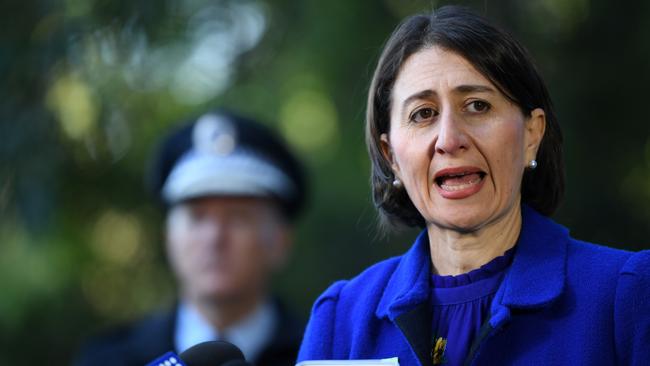
Ms Berejiklian said NSW’s previous encouragement of parents to keep children home from school was made because there was widespread community transmission at the time, a situation that is changing.
“At the time I recommended to parents they keep their kids at home until we understood the virus and where it was going in the community,” she said.
“We appreciated the impact it could have not just on the kids, the students but also on the teachers and the parents and everybody around schools.
So we’ve learned quite a bit in the last few weeks...we also appreciate that this can’t be sustained for a long-term.”
The Premier said that the curve in NSW was flattening, with positive test results decreasing even as testing numbers ramp up after the Easter weekend, a testament to the efforts of the government and people of NSW.
“If we hadn’t put in the changes when we had, unfortunately thousands of people would have been in our hospitals now fighting for their lives,” she said.
“I am relieved we took the decisions when we had but I also know what a stressful time it is for everybody, and I want to thank everybody for doing the right thing.
READ MORE: Schools may reopen ‘within six weeks’
Elias Visontay 7.35am: Arts Minister defends lower benefit for artists
Arts Minister Paul Fletcher has justified the government’s level of financial support for performers and artists who have lost work due to coronavirus by saying the new $1100 a fortnight JobSeeker unemployment benefit is about 70 per cent of average income for artists.
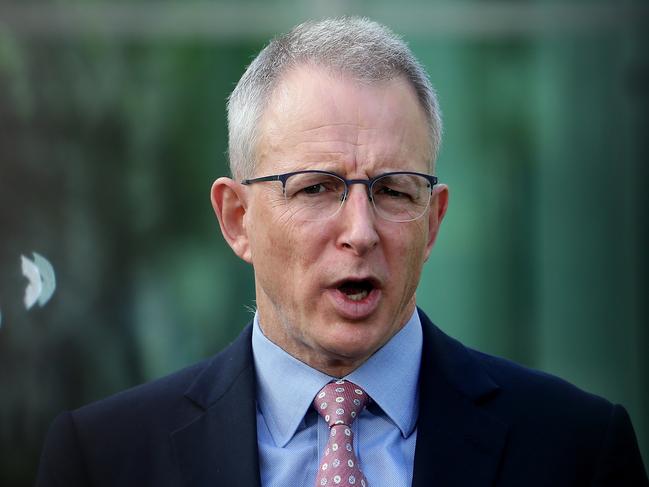
Mr Fletcher’s comments come after criticism from the arts sector that most workers won’t be eligible for the higher $1500 a fortnight JobKeeper wage subsidy payment because it is not traditional to work for the same employer in the arts industry for more than 12 months - a key requirement of eligibility for the subsidy.
The government is also under pressure from Labor to expand eligibility to the higher paying scheme to casual workers across all industries who have not worked for their employers more than 12 months.
“What we’re seeing is devastating in relation to the arts sector in particular where productions, performances have ceased, where galleries and museums are closed and this is a sector that’s been hit very hard,” Mr Fletcher told ABC Radio National.
“Many people in the arts sector are eligible for JobKeeper, we estimate that JobKeeper will bring billions of dollars into the arts sector. At the same time, there are many people in the arts sector who do work on a casual basis, on a gig by gig basis and they’re eligible for JobSeeker with the coronavirus supplement is nearly $1100 a fortnight.
“That incidentally is around 70 per cent of the median total income for artists, which is an important reference point.”
READ MORE: Too little, too late
Angelica Snowden 7.30am: Michigan protesters demand end to lockdown
Hundreds of protesters have gathered outside the Michigan Capitol building, calling for Governor Gretchen Whitmer’s orders to keep people at home and businesses locked up during the coronavirus outbreak to an end.
UPDATE:
— Mikenzie Frost (@MikenzieFrost) April 15, 2020
Almost four and a half hours after I first got here, people are still blocking and still honking. #OperationGridlock pic.twitter.com/qEgD7ongYA
Local reporter say protesters were on the steps outside the building for over four hours chanting “recall Whitmer”, “USA” and “lock her up”.
Others drove by but stopped their cars, creating gridlock traffic, to get out of their vehicles and raise signs.
One said “Gov. Whitmer We Are Not Prisoners” and another said “Michigander Against Gretchens Abuses.”
The protest, called “Operation Gridlock,” was organised by the Michigan Conservative Coalition.
State police said they would stay on the sideline unless people were injured.
Ms Whitmer, a Democrat, has extended a stay-home order through April 30 and has shut down schools and businesses deemed non-essential.
There are a LOT of people out of their cars at the Michigan Capitol right now. pic.twitter.com/g34oyTYGTZ
— Lauren Gibbons (@LaurenMGibbons) April 15, 2020
After a month of draconian steps around the country to minimise deaths and prevent hospital overload from the coronavirus pandemic, governors now face a new challenge - deciding when and how to begin easing restrictions on businesses and social gatherings.
In an abrupt reversal, Donald Trump said on Tuesday he would let governors determine the right time to reopen their economies after initially asserting that he, not the governors, had the power to reopen the nation’s economy.
READ MORE: Stir crazy in desert of solitude
Lachlan Moffet Gray 7.20am: WHO responds to Trump’s defunding order
The World Health Organsiation is scrambling to find other countries willing to fill the financial hole created by Donald Trump after he withheld American funding for the global body while it investigates its initial response to coronavirus.

The US gives the WHO an average of $US447 million (AUD$707 million) every year, which makes up almost 15 per cent of the body’s budget.
WHO Director-General Dr Tedros Adhanom Ghebreyesus said he hoped Mr Trump would change his mind and promised a review of its decisions while sidestepping the US President’s complaints about its alleged mismanagement, cover-up and missteps.
READ the full story here.
Lachlan Moffet Gray 7.15am: G20, IMF bring relief for poorest countries
Relief for the world’s poorest countries struggling to deal with coronavirus is on the way, with the G20 voting to suspend their debt service payments and the IMF announcing US$1 trillion (AUD$ 1.6 trillion) in capital for low-interest loans to more than 100 of its members.

The G20 on Wednesday agreed to freeze both principal repayments and interest payments owed to member states by 76 poorer nations until the end of 2020, an act that will free up US$20 billion ($AUD 32 billion) for poorer nations to fight the crisis said Saudi Finance Minister Mohammed al-Jadaan, who urged private creditors to match the scheme.
German Finance Minister Olal Scholz said the move was “an act of international solidarity with a historical dimension.”
The move was praised by the IMF, whicho on Thursday announced that they would free up more than $US1 trillion to meet the demands from 102 of its 189 member states for capital to help fight the coronavirus pandemic.
The IMF said it had already doubled its emergency assistance fund from US$50 billion to US$100 billion, and forecasted that the global economy will decline by three per cent this year, the largest global economic decline since a 0.1 per cent contraction after the Global Financial Crisis.
“We need to think of the challenges we will face on the other side of this crisis,” IMF Managing Director Kristalina Georgiva said, flagging a difficult post-pandemic recovery progress.
READ MORE: IMF jumped the gun: Frydenberg
Angelica Snowden 6.50am: Cuomo orders New Yorkers to wear masks outside
All New York residents will be required to wear face coverings when they are out in public and coming in close contact with other people, Governor Andrew Cuomo has ordered.
The new mandate will require a mask or face covering on busy streets, public transit or any situation where people cannot maintain two metres of distance.
The executive order from Mr Cuomo echoes recommendations from the Centers for Disease Control and Prevention as a way to limit the spread of the coronavirus.
The order takes effect on Friday, the governor said, and either a mask or a cloth covering such as a bandana will work.
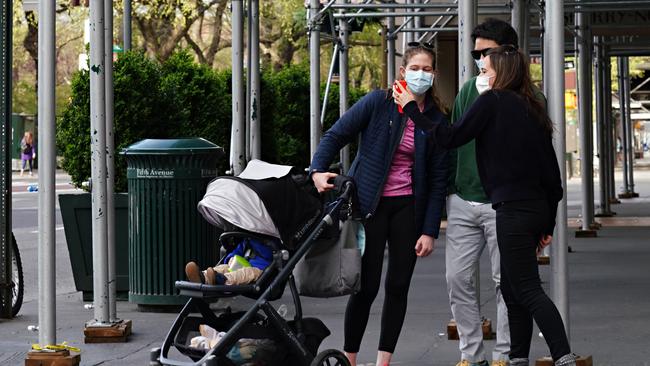
“Stopping the spread is everything. How can you not wear a mask when you’re going to come close to a person?” Mr Cuomo said at his daily briefing.
“On what theory would you not do that?”
The governor said there will initially be no civil penalties for noncompliance, but he’s urging merchants to enforce it among customers.
Though hospitalisations from the outbreak are levelling off, New York officials are trying to dramatically reduce transmission rates as the death toll rises.
New York recorded 752 deaths on Tuesday, for a total of more than 11,000 in just over a month.
Those figures don’t include roughly 4000 other deaths that city officials say were probably caused by the virus but haven’t been confirmed by a lab test.
For example, if you are riding on public transit where it is impossible to maintain social distancing, or walking on a busy sidewalk, you must wear a face covering like a bandana or a mask.
— Andrew Cuomo (@NYGovCuomo) April 15, 2020
Meanwhile the total US tally of coronavirus cases and deaths could soon jump because federal health officials will now count illnesses that are not confirmed by lab testing.
In total there 619,607 recorded cases of COVID-19 in the US and 24,429 people have died - more than any other country in both categories.
The Centers for Disease Control and Prevention told states on Tuesday to include probable COVID-19 cases in their reports to the agency. Previously, most states reported only lab-confirmed cases and deaths.
The change hasn’t caused US counts to rise much faster than they had been, but officials in some states said they were just learning about the change.
CDC officials said Wednesday in a statement that the change would give them “a better picture of the burden of COVID-19 in the U.S.”
There was already a big rise in New York City, where officials this week started counting people who had never tested positive for the coronavirus.
That caused the city’s death count to jump by more than 3,700 on Tuesday.
READ MORE: Online wills set to soar
Lachlan Moffet Gray 6.20am: 106-year-old UK’s oldest person to survive
A 106-year-old woman has become the oldest person in the UK to beat coronavirus after being discharged from hospital in Birmingham.
Connie Titchen was applauded by staff who lined the corridors as she was discharged from hospital on Tuesday.
We'd like to give our own round of applause to Connie who at 106 is heading home from City Hospital having successfully beaten #Coronavirus.
— SWBH NHS Trust (@SWBHnhs) April 15, 2020
She is our oldest patient to beat the virus - and may well be the oldest in the country to do so! #ClapForConniehttps://t.co/bKONIq4sTZ pic.twitter.com/zT28UPdT4A
=The grandmother of five and great-grandmother of eight, who recovered from a hip operation last year, was admitted to City Hospital on Mother’s Day with suspected pneumonia and received a diagnosis of coronavirus soon afterwards, The Times reports.
Mrs Titchen, who was ill with the virus for just under three weeks before being given a clean bill of health, said that she felt lucky to survive and was looking forward to seeing her grandchildren after a quick lunch stop before she left hospital.

Her recovery was one piece of good news in another devastating day for the UK, with 761 hospital deaths in the last 24 hours, bringing the toll to 12,868. The actual toll is likely higher, with the Department of Health and Social Care counting only those who die in hospital of the disease.
As of 9am 15 April, 398,916 tests have concluded, with 15,994 tests on 14 April.
— Department of Health and Social Care (@DHSCgovuk) April 15, 2020
313,769 people have been tested of which 98,476 tested positive.
As of 5pm on 14 April, of those hospitalised in the UK who tested positive for coronavirus, 12,868 have sadly died. pic.twitter.com/Rm19fv4jv0
The number is similar to Wednesday’s figures, with the UK now routinely recording a daily death toll higher than the daily toll of other western European countries that have been heavily impacted, with Italy recording 578 deaths in the last 24 hours and Spain 517.
Officials say the coronavirus outbreak is reaching its peak, but it is too early to start easing lockdown restrictions.
“Our view is that it is probably reaching the peak overall,” Boris Johnson’s medical adviser Chris Whitty said at a press conference on Thursday.
“We are not yet at the point where we can say confidently and safely ‘this is now past the peak and we can start thinking very much now about the next phases.’”
The government is expected to extend the far-reaching lockdown measures within the next day, despite the UK lagging behind other European countries in imposing lockdown measures in the first instance.
Labour party leader Keir Starmer hit out at the Prime Minister, saying the delay in the implementation of lockdown measures until March 23 could lead to the UK’s death rate being among the highest in Europe.
“I am worried that it looks like we are going to have a higher death rate than any other country in Europe and there will obviously be searching questions about why that has happened,” Starmer told radio network LBC.
“I did think the government was going too slowly,” Starmer said.
“We will have to look back in due course.”
Mr Starmer also said the government should publish its exit strategy from lockdown.
A widespread lockdown came into force on March 23. Prior to that the Conservative government had urged people not to make unnecessary journeys and to cut down on socialising, rather than closing establishments down.
Journalists should stop asking about an ‘exit strategy.’ There is only one way we can ‘exit’ full lockdown and that is when we have a vaccine. Until then, we need to find ways we can adapt society and strike a balance between the health of the nation and our economy . #COVID19
— Nadine Dorries 🇬🇧 (@NadineDorries) April 15, 2020
But health minister Nadine Dorries, who recently recovered from a case of coronavirus, took to Twitter to criticise those pushing for an end to lockdown, saying it can only happen once a vaccine is developed.
READ MORE: Young women most at risk of virus
Agencies 6.00am: Virus cases double in a fortnight to 2 million
The number of coronavirus cases worldwide has doubled in just a fortnight to over two million, with nearly 72,000 new cases recorded around the world over the past 24 hours.
The speed of the increase is remarkable: according to Johns Hopkins University, it took 83 days to reach the first million cases worldwide and just 14 days for the second million.
But the true extent of the virus is almost certainly far wider as most countries test only the most serious cases.
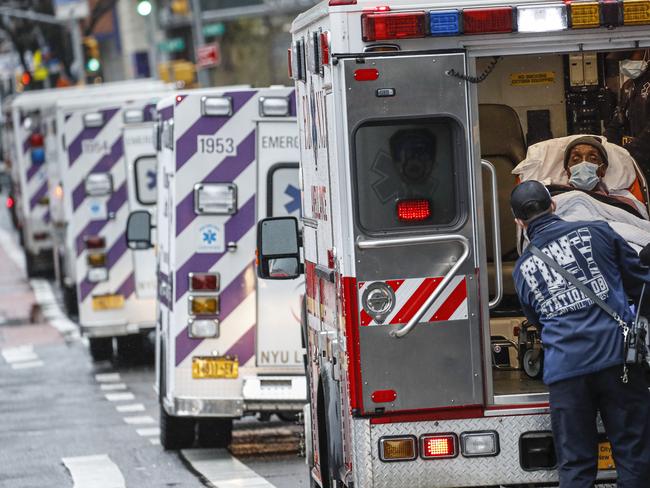
In the United States, now the epicentre of the pandemic, the death toll stood at 27,085 with 614,482 infections. At least 50,107 patients have recovered.
Italy is the next most-affected country with 21,645 deaths from 165,155 infections.
It is followed by Spain with 18,579 fatalities from 177,633 confirmed infections, France with 17,167 deaths and 147,863 infections and Britain with 12,868 deaths from 98,476 cases.
READ MORE: Great COVID-19 exodus revealed
Agencies 5.30am: China didn’t warn public for six key days
In the six days after top Chinese officials secretly determined they likely were facing a pandemic from a new coronavirus, the city of Wuhan at the epicentre of the disease hosted a mass banquet for tens of thousands of people; millions began travelling through for Lunar New Year celebrations.

President Xi Jinping warned the public on the seventh day, January 20. But by that time, more than 3,000 people had been infected during almost a week of public silence, according to internal documents obtained by The Associated Press and expert estimates based on retrospective infection data.
Six days.
That delay from January 14 to January 20 was neither the first mistake made by Chinese officials at all levels in confronting the outbreak, nor the longest lag, as governments around the world have dragged their feet for weeks and even months in addressing the virus.
But the delay by the first country to face the new coronavirus came at a critical time — the beginning of the outbreak. China’s attempt to walk a line between alerting the public and avoiding panic set the stage for a pandemic that has infected more than 2 million people and taken more than 128,000 lives.

Read the full story here.
Yoni Bashan 5am: Ruby Princess must depart Australia by Sunday
NSW Police Commissioner Michael Fuller has set a deadline of Sunday for the Ruby Princess to depart Australian waters, as investigators question whether pressure was applied on the ship’s captain or doctor to downplay the sickness of their passengers.
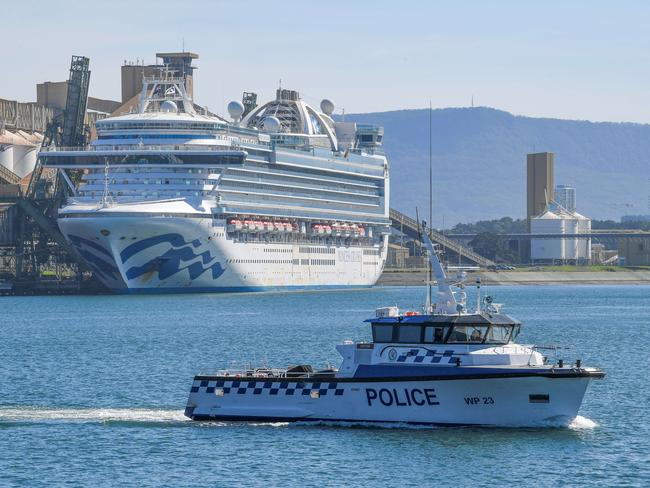
More than 600 cases of the coronavirus and 19 deaths in Australia have been linked to the ship.
Homicide detectives were yesterday preparing to download the contents of the ship’s voyage data recorder collected during a raid of the ship last Friday.
Their inquiries have tightened around the captain, the doctor and the reliability of their declarations to authorities about the number and severity of sick passengers on board the vessel.Read the full story here.
Adam Creighton 4.45am: Coronavirus drives Australia’s massive population decline
The coronavirus is driving the biggest population decline in Australian history, with 300,000 tourists, temporary workers and students already departing this year in an exodus that threatens to deepen a consumer spending slump and hit the housing market.
The number of temporary visa holders in Australia dropped by 260,000 in the first three months of this year, with a further 50,000 departing in the first two weeks of April, Acting Immigration Minister Alan Tudge has revealed.
Research obtained by The Australian predicts a further 300,000 people could leave the country to return home by the end of the year, which economists warn could further erode consumer demand and cause a slump in the rental and housing markets.

Read the full story here.




To join the conversation, please log in. Don't have an account? Register
Join the conversation, you are commenting as Logout